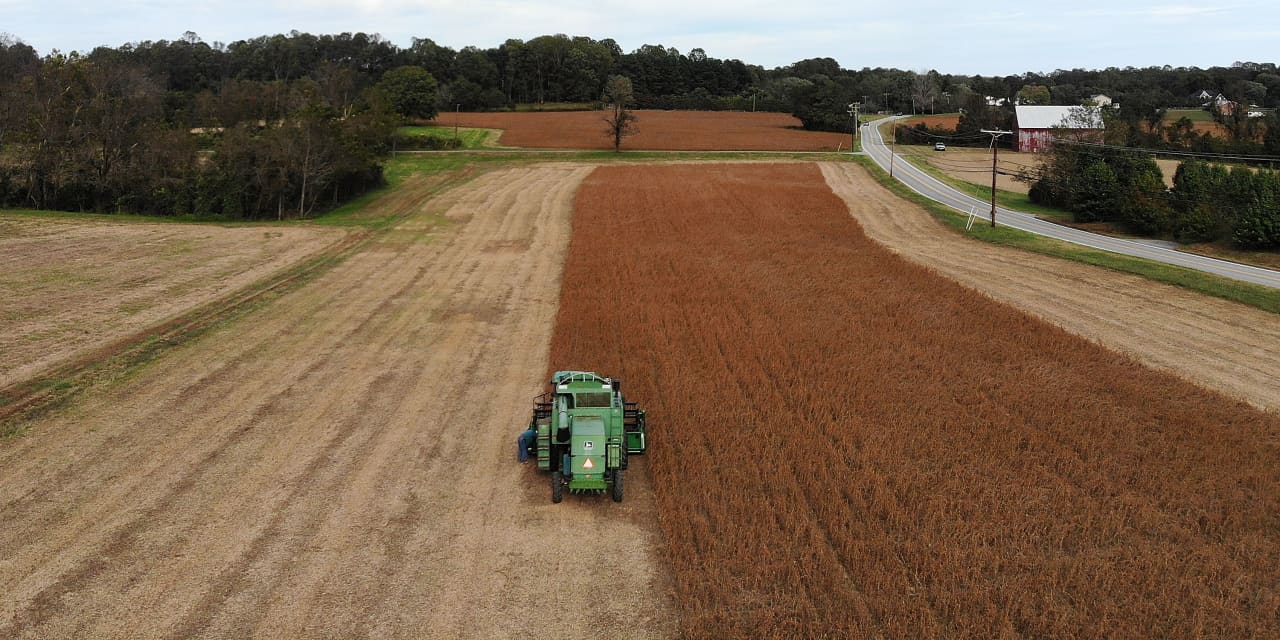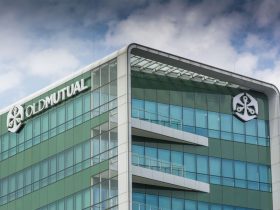First, there was the intense heat. Then, the wildfires and violent storms followed.
This summer is on track to be the hottest recorded on Earth. But the impact goes far beyond keeping cool: Extreme high temperatures are creating risks to food production.
Heat waves destroy crops and threaten to drive up food prices. Food insecurity is the ‘new normal’ with climate change pointing to recurring crises and structurally higher agricultural commodity prices, wrote
J.P. Morgan’s
chair of global research Joyce Chang in a recent research note.
Big packaged-food companies such as
Mondelez International
(ticker: MDLZ),
Unilever
(UL) and
Nestlé
(NESN.Switzerland) could face an increasing struggle to pass on price increases while not driving away customers. However, price volatility could bring benefits for companies such as agricultural equipment supplier
Deere
(DE) and commodities trader
Bunge
(BG).
The standout example of how extreme weather can drive up food prices is olive oil. The Mediterranean staple has more than doubled over the last 12 months to $8,000 a metric ton, a record high according to statistics tracked by the International Monetary Fund back to 1990. Extreme heat was the culprit as Spain, the world’s largest producer, was hard hit by drought.
MORE COMMODIty MUST-READS
The impact on privately owned Dave’s Gourmet offers a snapshot into what some of America’s biggest food producers could face in the future. The Dallas-based specialty food company sources olive oil from a producer in the south of Spain. Dave’s Gourmet marketing director Jade Steger told Barron’s that its supplier raised prices by 20% to cover additional costs.
“Half of the Spanish olive groves are not in irrigated plantations,” Steger said. “Our partner relies on an efficient water irrigation system which significantly reduces the risk, but unfortunately it can’t be removed entirely.”
Olive oil has a relatively limited knock on effect in the food chain, although fans of
Starbucks’s
(SBUX) range of olive-oil infused coffees might need to brace themselves for a price increase. However, a whole range of major food ingredients are at risk. Argentina’s soybean crop fell by more than half this year due to prolonged drought, according to the Buenos Aires Grains Exchange. Kansas had its smallest wheat crop since 1966 this summer after dry conditions caused many fields to be abandoned.
Government-imposed measures to tackle food inflation pose the most immediate threat to corporations. The French government said in June that it had reached a deal with dozens of food producers to lower their prices, with a minister subsequently naming
Unilever
as one of the companies which wasn’t doing enough to bring down costs. Unilever declined to comment on the French government’s comments but told Barron’s its pricing decisions are always taken very carefully and it is investing in regenerative agriculture practices to secure the food-supply chain.
Unilever CEO Hein Schumacher told analysts on a recent earnings call that agricultural commodities were still highly volatile, citing the drought in Southern Europe, and said the company had been facing prolonged negotiations with retailers.
That was also a theme picked up by Oreo maker Mondelez, which said that its volumes of sales in Europe were down in the second quarter due to contentious negotiations with grocers, which included its products being temporarily removed from some supermarkets.
At the moment, the effects look manageable. Unilever’s underlying sales rose 7.9% in the second quarter of the year from the same period a year earlier, while Mondelez‘s organic net revenue was up 16%, both boosted by price increases. Unilever’s U.S.-listed shares are flat this year so far while Mondelez is up 4.2%.
Price increases are slowing now, after hitting a peak in July last year after Russia’s invasion of Ukraine caused a global crisis. However, climate change is increasing the chances of sharp swings in food prices in the future. Over the next few years that could be exacerbated by the El Niño weather pattern, which tends to raise temperatures and bring more extreme weather conditions.
“Sugar, cocoa, coffee are very much at risk and so are the grains,” said Kathy Kriskey, a Commodities ETF strategist at Invesco. Cocoa prices hit a 12-year high in New York trading this summer with harvests in West Africa hit by extreme wet weather.
Higher prices for cocoa and coffee pose challenges for companies such as Nestlé, although the the effects can be complex. Higher prices could drive consumers to
Nestlé
s instant coffee products. Nestlé shares are down 2.8% this year so far, after it reported organic sales growth of 8.7% for the first half of the year.
Another example of a vulnerable staple is wheat. Researchers at Tufts University found that heat waves that only had a probability of happening once every hundred years based on conditions in 1981 are now likely to happen once every six years in the Midwestern U.S. and once every 16 years in Northeastern China, both key wheat-producing areas.
That could have an effect on agricultural equipment suppliers such as
Deere.
They generally benefit from rising crop prices, which leave farmers with more profit to spend on tractors and other machinery. Drier conditions can therefore be helpful in supporting crop prices and farming profits but only if they don’t tip over into severe drought.
For this year, Deere executives said they expect sales of large agricultural equipment in the U.S. and Canada, its largest markets, to be up approximately 10% as drier weather conditions supported commodity prices. Deere shares are down 2.8% this year so far and it trades at a forward price-to-earnings multiple of 12.5 times, below its five-year average of 16.0 times according to FactSet.
One company hoping to profit from volatile weather swings is grain trader and oilseed processor
Bunge.
Earlier this year it struck a deal to buy fellow grain merchant Viterra for $8.2 billion, citing the advantages of having a larger global footprint to deal with violent weather caused by climate change. Bunge’s profit tripled in the second quarter on improved margins as it benefited from commodities volatility despite falling sales. Bunge stock is up 14% this year so far and it trades at a forward P/E multiple of 9.5 times, below its five-year average of 11.3 times according to FactSet.
Investors can also look to invest directly in commodities to either back an expected rise in prices or hedge against inflation. Invesco’s Kriskey advises against concentrating on a single crop and instead looking for exposure to a broader basket such as via the fund manager’s Agriculture Commodity Strategy No K-1 ETF, an exchange-traded fund with exposure to 11 agricultural commodities.
A new normal for the climate is likely to mean more abnormal movements in food prices. That creates risks but also opportunities for investors keeping a close eye on the stocks and commodities most affected and with a strong understanding of how to play a rising likelihood of food price shocks.
Write to Adam Clark at adam.clark@barrons.com
Read the full article here













Leave a Reply